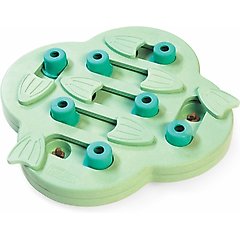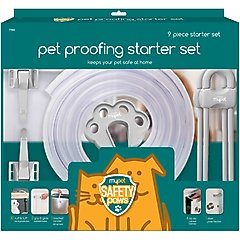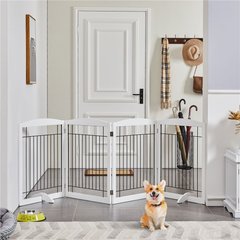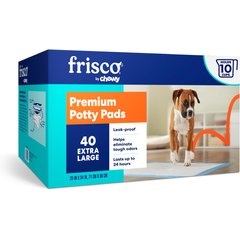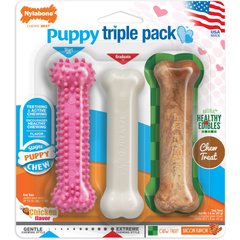Should I Get a Dog? 8 Questions to Ask Before Bringing Home a Pup
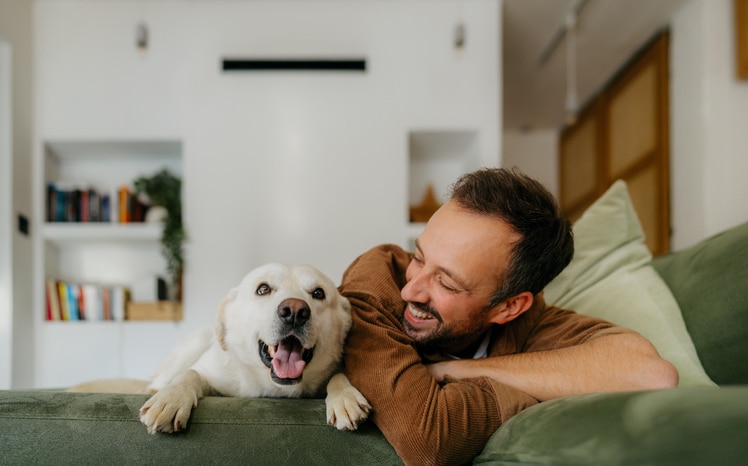
Photo by AleksandarNakic/E+
Dreaming of sloppy kisses and long walks with a four-legged sidekick? Before diving into dog parenthood, it’s important to ask yourself if you’re ready.
Bringing a dog home means committing to your new bestie for their entire life—that could be a decade or more of treats, vet bills, and poop bags (and, of course, their undivided loyalty and friendship).
So, here are some key questions to ask yourself first.
Key Takeaways
- Dogs typically live between 10 and 13 years, so every pet parent should be prepared for a lifetime of commitment.
- Getting a dog should be a group decision: Make sure everyone in your home is comfortable with the idea.
- You’ll need to puppy-proof your home and be OK with some changes to your daily routine.
- Picking the right type of dog is key: Puppies might require more supervision, while a senior dog might be best for less active pet parents.
Can You Give Your Dog a Home for a Decade or More?
Our pups live, on average, between 10 and 13 years, though the smallest breeds usually live even longer—into their mid-teen years or beyond.
Before adopting a new bestie, make sure you’re ready for a long-term commitment that spans every stage of their life, from an energetic puppyhood to their more chill senior years.
Are You Ready To Adjust Your Routine?
Dogs thrive on consistency, and becoming a dog parent means putting their needs at the top of your to-do list.
Your mornings might now include a walk, feeding your pup breakfast, and some playtime before you start your own day.
Afternoons may mean checking in at lunch for a bathroom break or hiring a pet sitter to stop by. In the evenings, dogs need dinner, a walk, mental stimulation like a puzzle toy, and quality time with you.
Recommended Products
A dog’s needs vary by age, breed, and health, though all dogs need daily interaction and structure, says Carol Osborne, DVM, founder of Chagrin Falls Veterinary Center & Pet Clinic in Chagrin Falls, Ohio.
If your schedule is unpredictable or you travel frequently, it might be the perfect time to help out a foster dog instead. Foster dogs are usually a short-term commitment with a local rescue.
Is Your Home Puppy-Proof?
Even if you’re not bringing home a young puppy, dogs of all ages need a safe environment. Dogs don’t know they shouldn’t gobble down the grapes they found on the kitchen counter, so it’s up to you to keep their environment safe (and avoid a vet visit).
Dog-proofing should include:
- Securing trash cans and storing food out of reach
- Checking toys frequently to make sure there are no loose pieces, holes, or rips
- Blocking off unsafe areas
- Removing toxic plants
- Stashing away or protecting anything a dog might be curious about chewing on, like electrical cords or small household items
- Storing medications, supplements, and cleaning products in cabinets
Recommended Products
Can You Afford a Dog?
It’s a good rule of thumb to plan for at least $1,900 in expenses every year for your very deserving pup. However, this might increase depending on where you live and the health of your dog.
Here’s a breakdown of some common things to budget for:
Adoption Fee
Adoption fees usually range from $35 to $350 or more. It’s not unusual for local shelters to reduce or waive adoption fees altogether when they’re full.
Buying a puppy from a breeder, on the other hand, can cost several thousand dollars. If you go this route, do your research first.
Everyday Supplies
Expect to spend a few hundred dollars on initial supplies. Chewy offers 35% off your first Autoship order, which can help reduce those startup expenses.
You’ll also need to budget for everyday supplies, such as:
- Dog food formulated for your pup
- Dog treats
- Poop bags
- Grooming supplies
- Dog toys
- Food and water bowls
- A leash and harness
- Some cozy beds to place around the house
- Flea and tick prevention
Budget at least $100 per month for these basics.
Vet Care
The cost of routine veterinary exams typically ranges from about $50 to $250 per visit, but this number can vary wildly depending on the individual dog and where you live.
Additional vaccinations, medications, diagnostic tests, and flea, tick, and heartworm prevention can all add to the bill.
Emergencies, like a swallowed object or a sudden illness, can cost hundreds or even thousands of dollars. Pet insurance can offset many of these costs, but you should still have money set aside to pay for care until you’re reimbursed.
Chewy’s CarePlus insurance plans start at $30 per month.
Social Life, Training, and Grooming
Are you away a lot during the day? Or got an anxious pup?
You may need to budget for professional training, doggy daycare, a dog walker, or a pet sitter, which can add hundreds of dollars to your monthly expenses.
Depending on breed, you might also need to give your canine some routine spa days.
Will Your Dog Like Where You Live?
There’s more to a dog’s environment than just geography, says Allie Bender, CDBC, CPDT-KA, SBA, founder of Pet Harmony Animal Behavior and Training in Naperville, Illinois.
While some breeds might enjoy the city and others need fresh country air, those aren’t the only considerations.
Bender suggests considering:
- Your family, including ages, daily routine, and the busyness of your home
- Whether other four-legged family members will want a sibling
- Whether your home is free of stressful triggers, especially for anxious pups
- Which type of dog is the best fit for your space (a Dalmatian won’t love a studio apartment with a pet parent who dislikes trips to the park)
How Patient Can You Be With Your New Pup?
“Stress-related behaviors are common during a dog’s adjustment period,” Bender says. During this time, your pup might test boundaries, have accidents, or seem withdrawn or overwhelmed. They need patience, kindness, a predictable routine, a safe space for independent time, and a calm environment as they adjust.
According to Bender, new pet parents often see noticeable behavior changes at key milestones—around two weeks, three months, and one year, as their dog slowly settles in and gains confidence in their new home.
Is Everyone Else in Your Family Ready for a Dog?
Bringing home a dog needs to be a household decision. Is your partner or roommate on board? Do your kids know how to interact with dogs?
“There should be conversations about who is responsible for what and the expectations of each person in relation to the dog, including caregiving and finances,” Bender says. “Even if someone is not going to be the primary caregiver for the dog, they will be impacted in some way by the new addition.”
What Dog Should You Get?
Once you’ve decided you’re ready for a dog, the next big question is: What dog should you get? Choosing the right match means thinking not just about breed or size, but also about lifestyle, energy levels, and age.
So, should you get a puppy or an older dog?
That adorable puppy comes with a lot of energy and a need for training. Consider whether you have the time and patience for potty training, socialization, teething troubles, and 24/7 supervision.
Recommended Products
Adult or senior dogs, on the other hand, are sometimes already housetrained and may not require as much attention (though even senior dogs need exercise and playtime every day).
If you’re less active, a senior dog is probably a better option.
Once you’ve decided you’re ready to welcome a deserving dog into your home, it’s time to start your search. Head out to your local shelter or rescue, check out their social media pages, or search Chewy’s database of adoptable dogs in your area.
When you find a pup whose personality and needs are the perfect fit, get ready for loyalty, affection, and cuddles for years to come.
